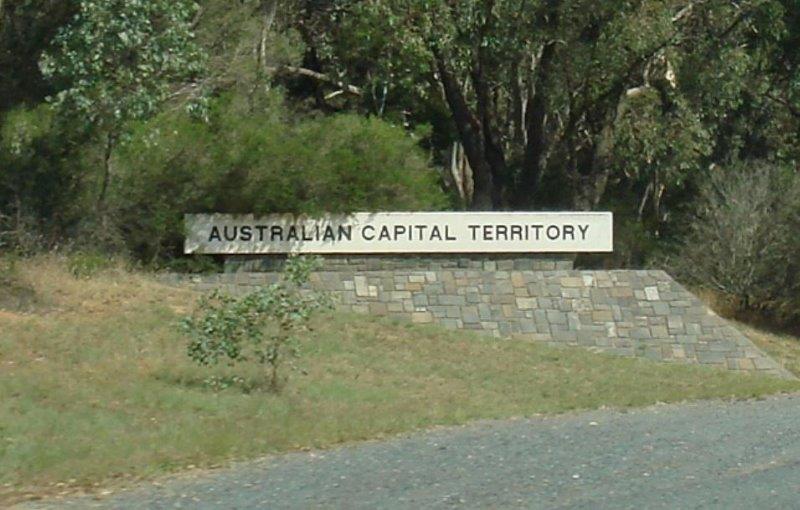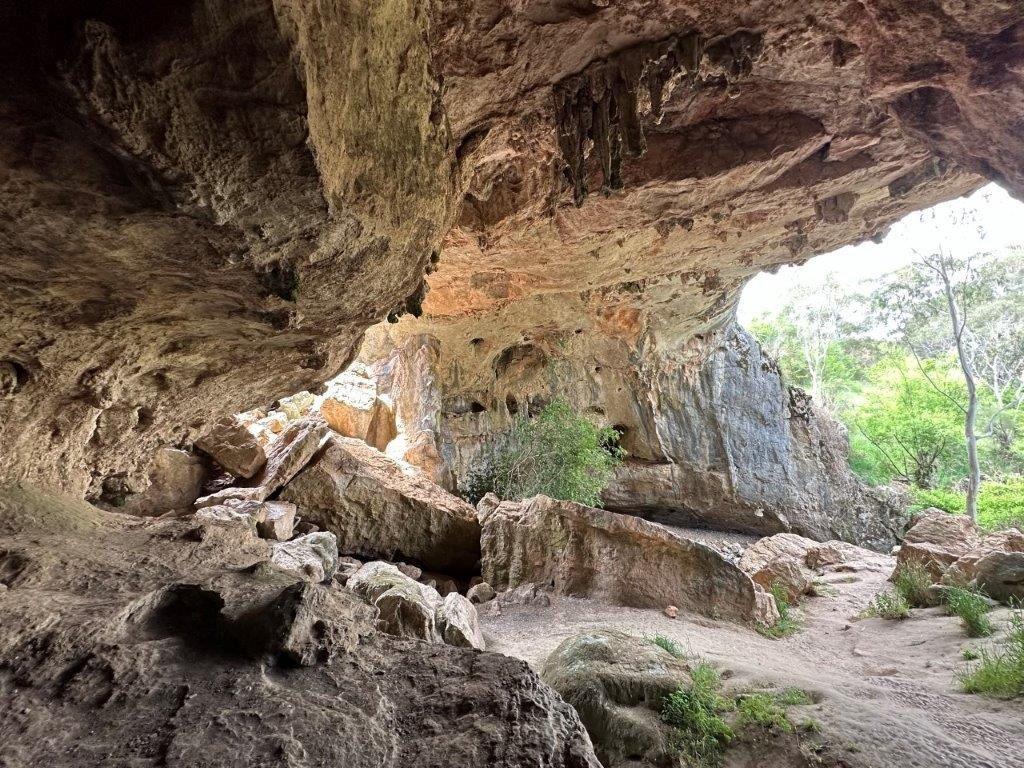In this post we explore the area between Newcastle and Sydney, cross the Blue Mountains to Central New South Wales and enter the ACT.
During previous trips to Newcastle we spent most of our time in the industrial areas. This time we focused on the touristy side and went beyond the CBD, to surrounding areas.
We started with the Pirrita Island Miners Point circuit to explore the landscape and heritage around the Swansea foreshore. The walk provides uninterrupted views of Lake Macquarie, with great parks along the way.

We based ourselves next to Lake Macquarie at Mannering. We were fortunate to catch up with friends from Sydney. We ended a relaxing day at the caravan park with an easy stroll on the William and Clarence Wynn Walkway on the lakeside.
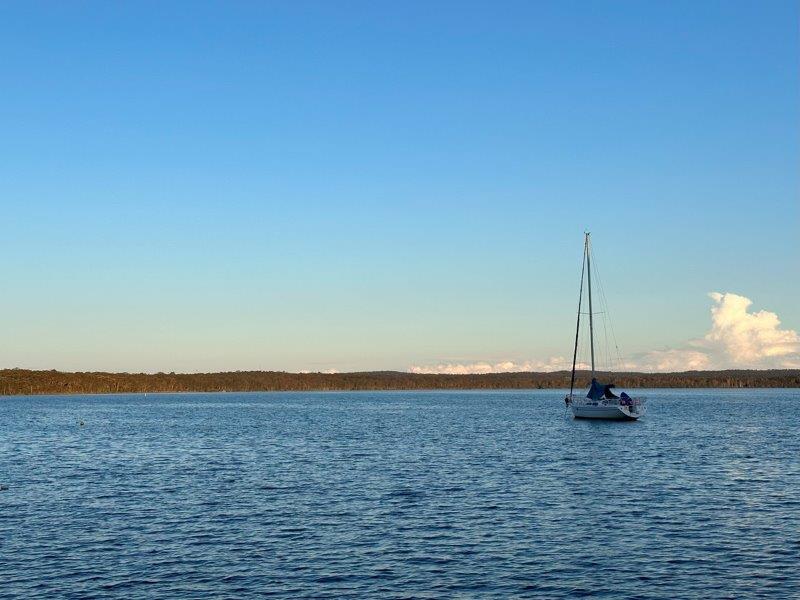
We did a daytrip to Terrigal to do the Haven walk to the Skillion Lookout. On the way down we came across this lively, rocky foreshore.
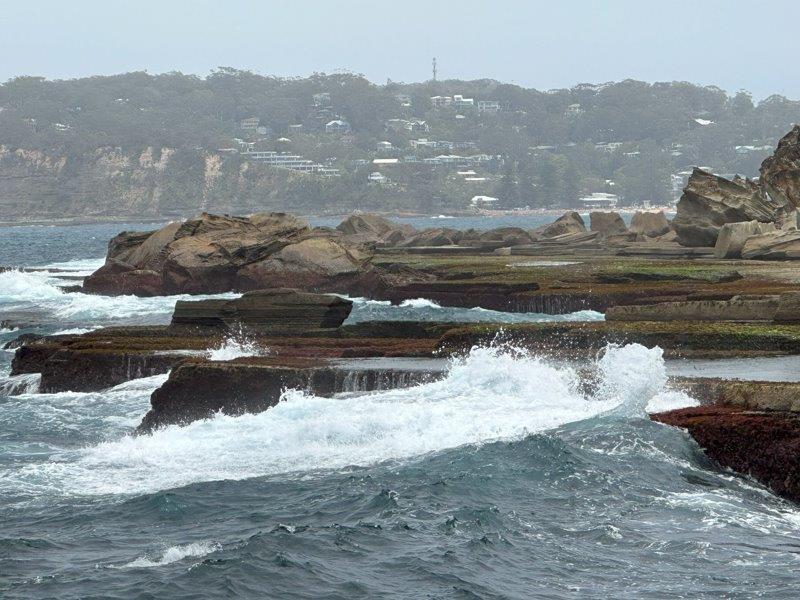
We followed the Terrigal boardwalk to the strip of restaurants and cafes.
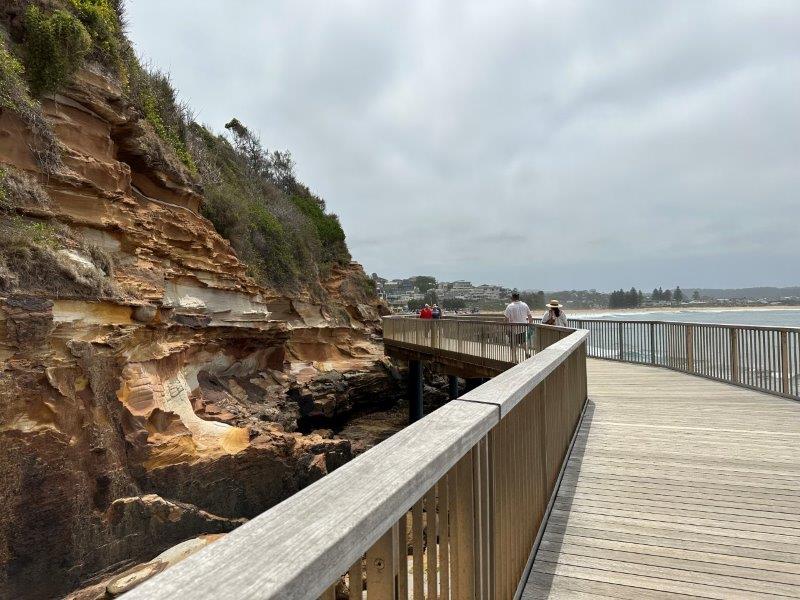
We spent our last day in Newcastle CBD. On the way to the city, we stopped at the Long Jetty. This jetty was built by Harry Price in 1914 for personal use to his own estate. One year later, the jetty became a popular public jetty to cross to Wyong.
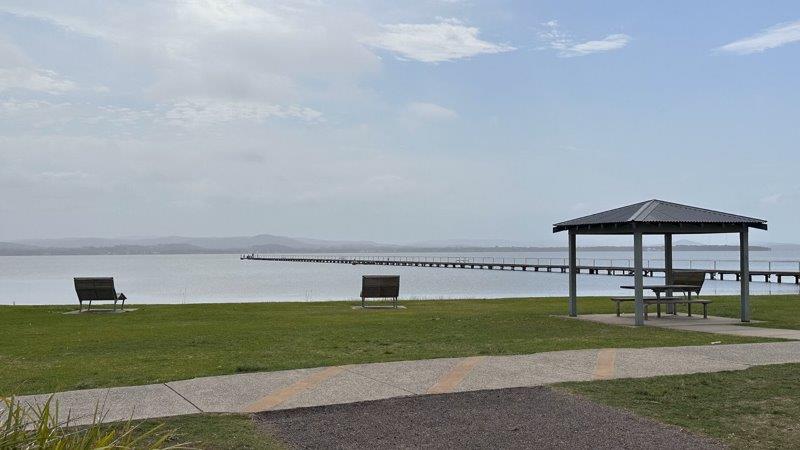
The stainless steel Memorial Walk in Newcastle is elevated high above the city. It provides a fantastic view over the surrounding neighborhoods and the coastline. This walk was opened in 2015 to commemorate the 100 year anniversary of the ANZACs landing in Gallipoli.
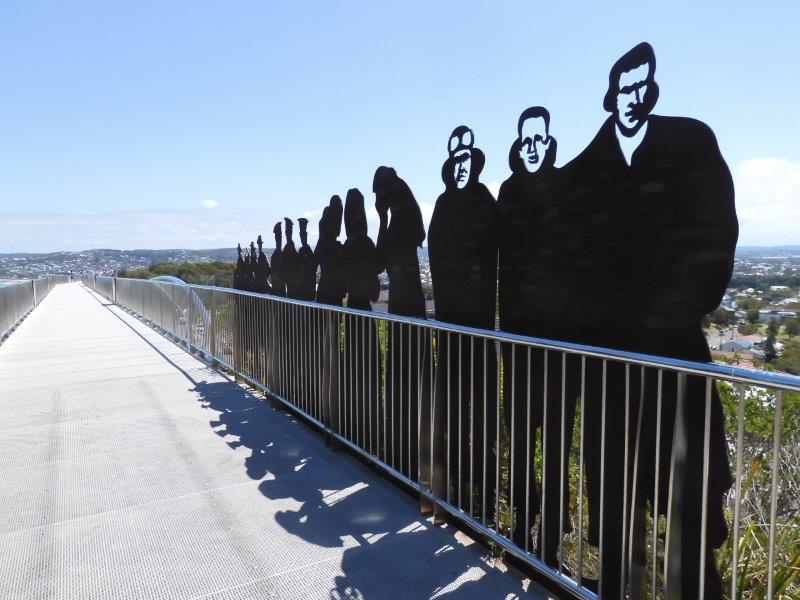
Not too far from the boardwalk, is King Edward Park. Walking through the park takes you to the Bogey Hole. This ocean pool was chiseled by convicts in 1819 for the personal use Major James Morisset. Morriset was the longest serving commandant in Newcastle. Some locals still refer to this pool as the Commandant’s Baths.
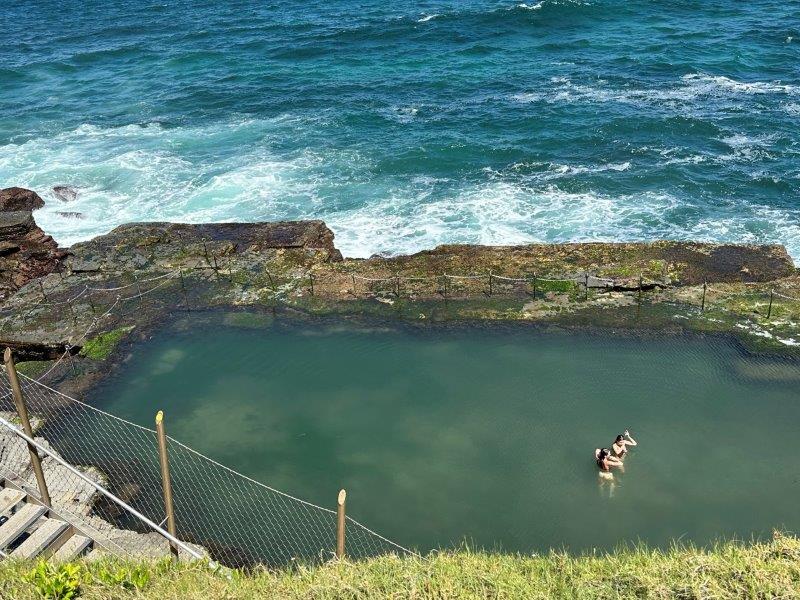
After exploring the Central coast between Newcastle and the Hawkesbury river, we headed west to the Blue Mountains. This was our fourth visit to the Blue Mountains. This time around, we decided to cross the mountain over The Botanist Way. This 90km drive follows the Bells Line. It is a steep road taking you through a World Heritage listed area to Mount Wilson, where we stayed.
When we were driving the same road in 2017 with a rental car, I was wondering which muppets will tow a caravan over this steep mountain. Fast forward five years, and we are those muppets… The road is steep but fairly straight until you turn off to Mount Wilson. The screen shot from Google Maps included below, shows one of the hairpin bends we had to negotiate with our 14 meter rig.
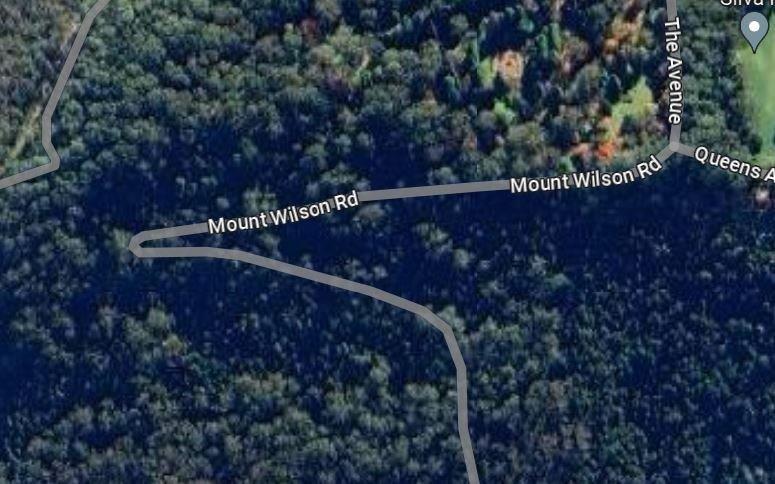
At the end of the scenic drive through Mount Wilson, we got to Cathedral Reserve. When we got to camp, and after a whiskey, the drive was all worthwhile. This was a free camp, with no booking required. Best of all, we almost had the camp to ourselves. We decided to base ourselves at Cathedral Reserve for a few days to explore the northern side of the Blue Mountains.
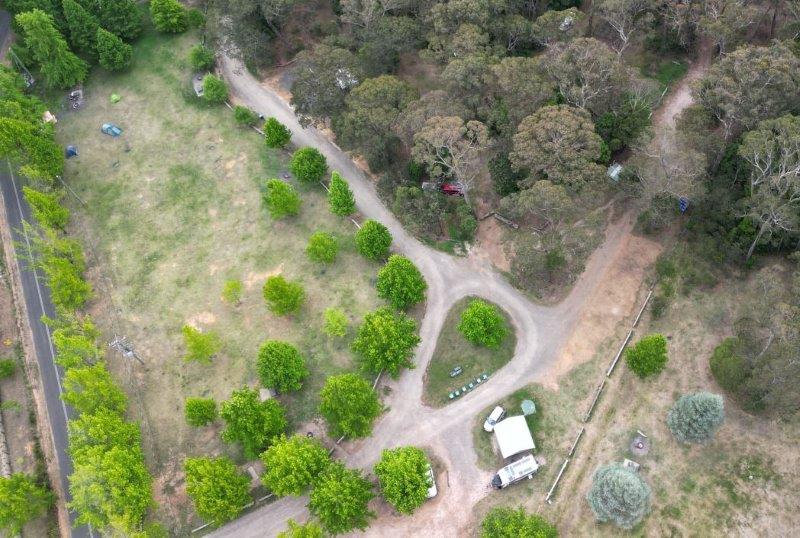
We could even have a fire…
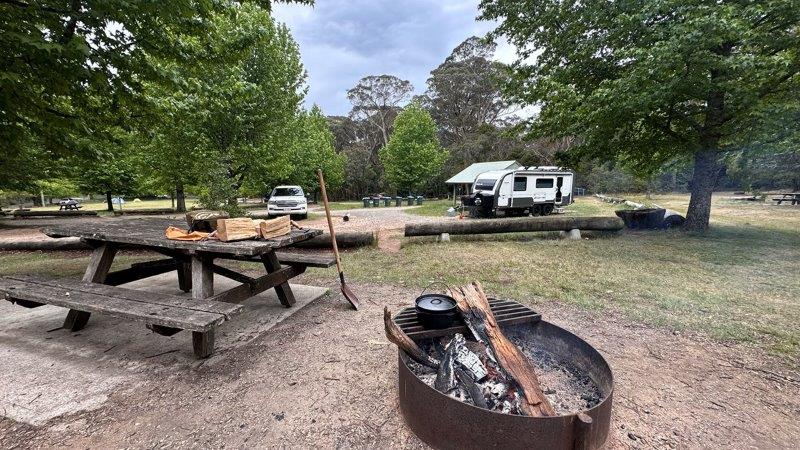
This area is riddled with walking trails. We had a false start with the first walking track to Cathedral Ferns. We followed the directions from the camp to the picnic ground, looking for the the old Giant Tree. After a bit of a scuffle, we found the ferns, and an information board indicating that the tree was struck by lightning back in 2008. Only part of the trunk was left.
The next day we went to Wynnes Rocks Lookout with spectacular 270 degree views including the Chinaman’s Hat.

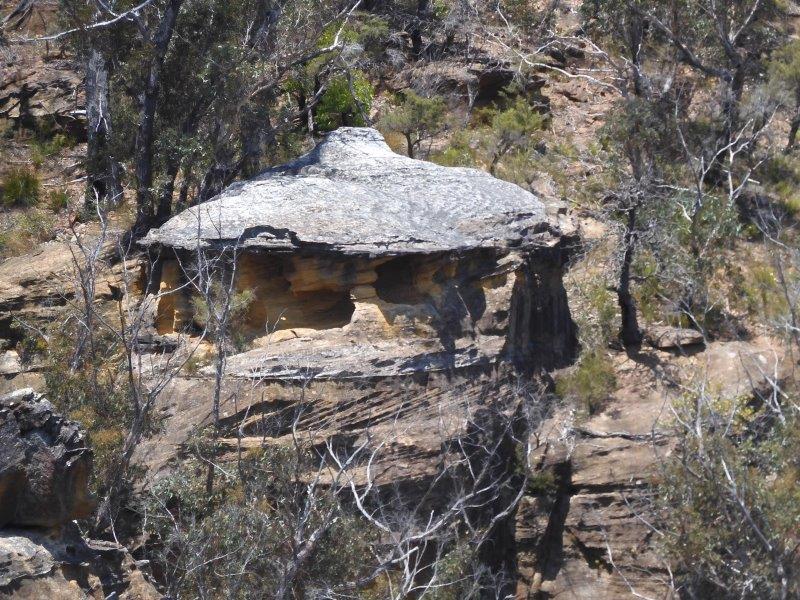
On our way back, we wanted to visit the Turkish Bath Museum and we were welcomed by these friendly iconic toadstool mushrooms.
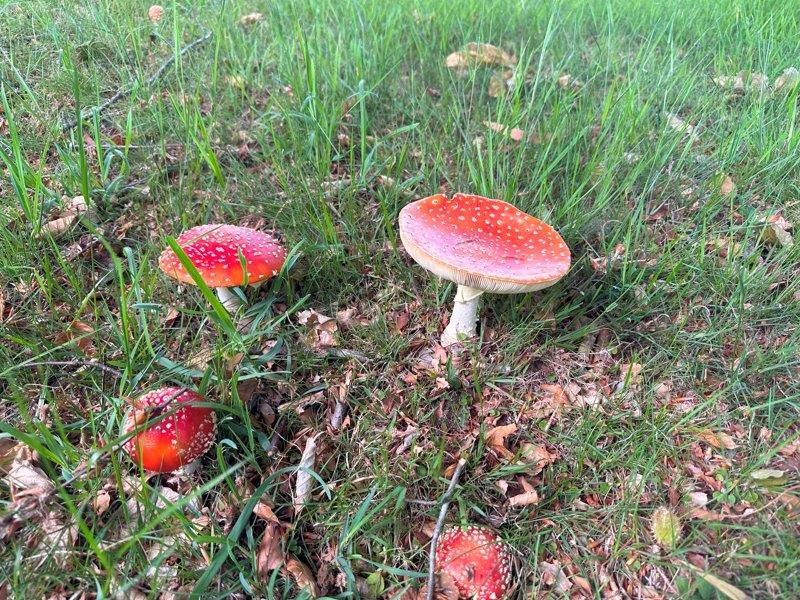
Unfortunately the Turkish Bath Museum was closed during our stay. The Turkish bath was built on the Yarrawa estate. This estate was the first property to be established in Mt Wilson in 1875. The bath was apparently built in 1880s by Richard Wynne for his wife Mary Ann for therapeutic reasons rather than religious ones.
This is one of best remaining historic Turkish Baths in Australia and was refurbished in the 1990s.

Old mate, camping next to us, came to Mt Wilson with his motorbike to do a few bush walks. He shared some of his best walks with us. The one that was of particular interest to us was Dargan Arch. This walk was not on any of the brochures we had, making it even more appealing.
On the way to the Arch we did a quick detour to Mount Banks Picnic Area and stopped for a few photos on the way.
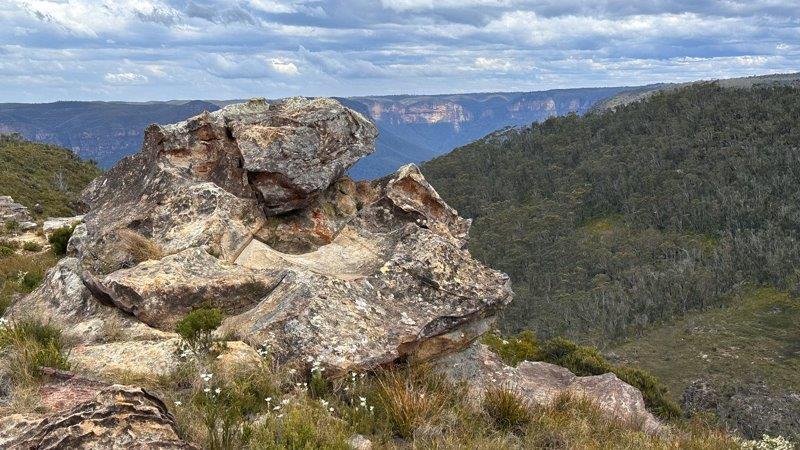
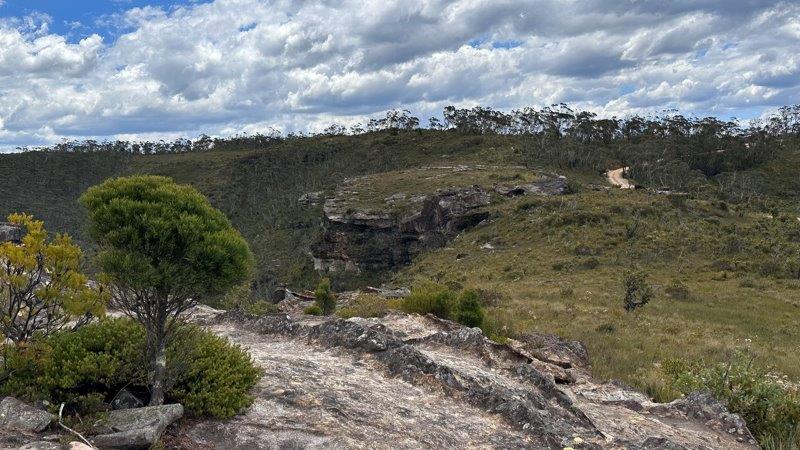
After we followed the fairly vague instructions, we got to the starting point to the Dargan Arch. It was a small footpath leading downward to a rocky section. We were really surprised by the variety of wild flowers on this hike.

As we were walking over the rocks we came to the sheer drop off , right in front of us. This is still one of our most rewarding walks on our trip, so far. This sandstone arch is the remainder of a collapsed cave. You can walk over the arch or climb down into the cave looking up at the arch. It was breathtaking, and the best place to have lunch!
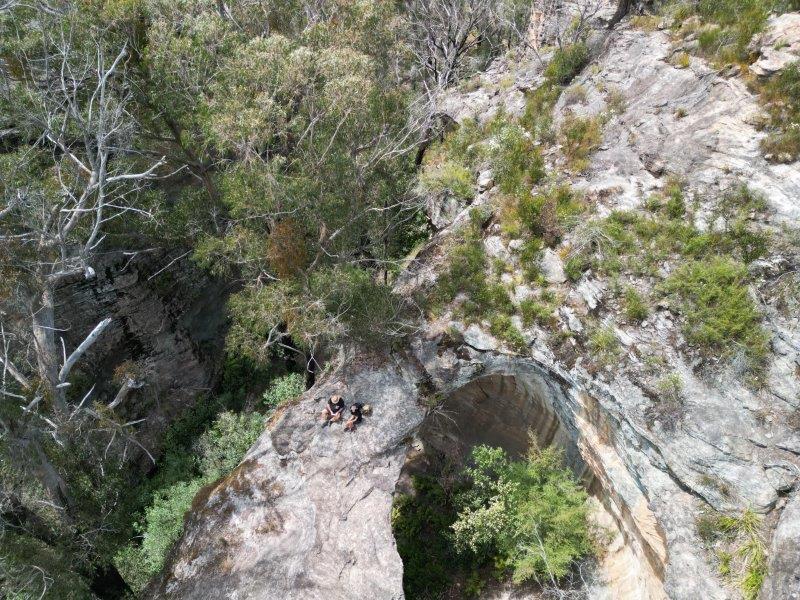
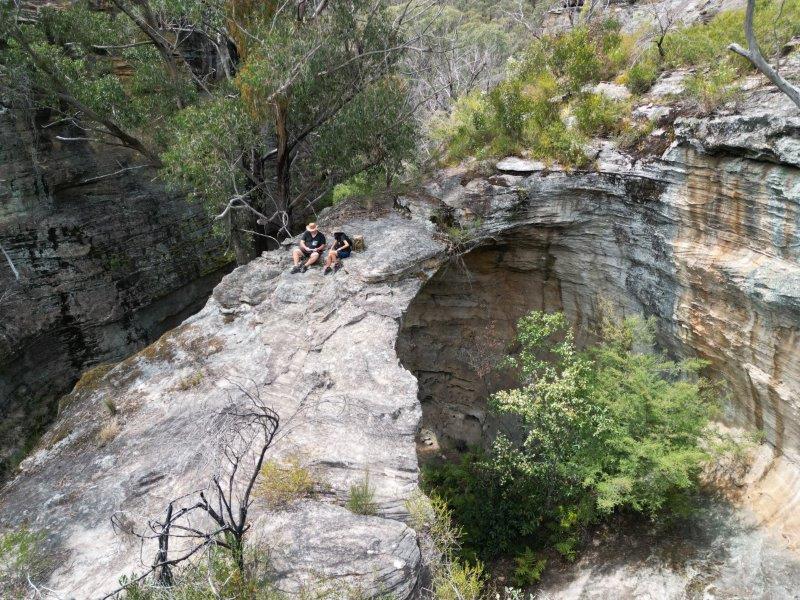
At the end of the day we went to the Blue Mountains Botanic Garden at Mount Tomah.

This 28 hectare garden has winding paths that could keep you busy all day. The gardens are nestled in an UNESCO World Heritage Area wilderness.

At the time we were there, many proteas were in bloom.
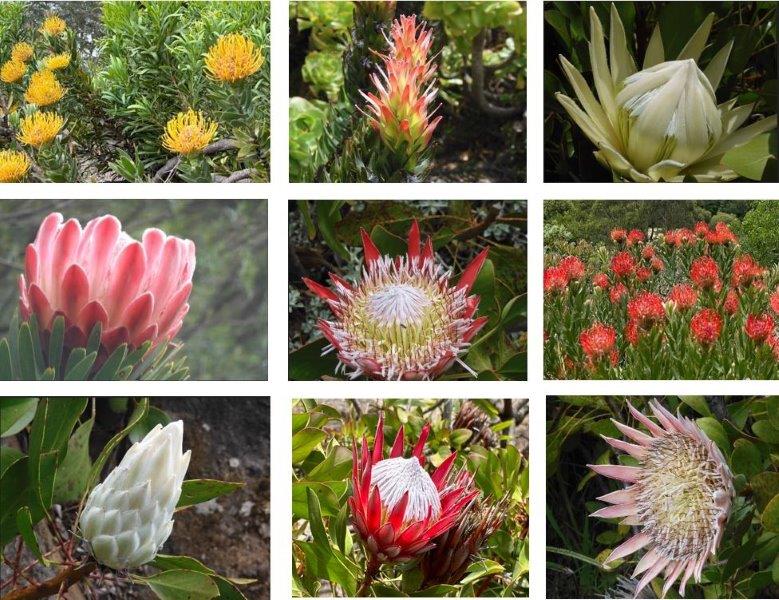
The garden has many picnic spots, rest areas and great views.
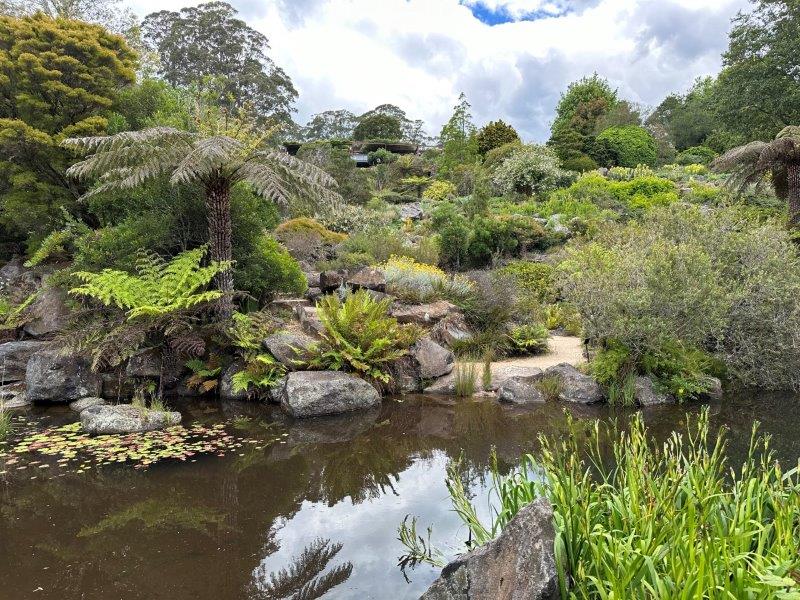
We left the mountain and headed to Chifley Dam, south of Bathurst. On the way to our next camp we came across this green gorilla. How easy would it be to give someone directions to your farm? “Follow Lagoon Road towards the Chifley dam and turn left at the green gorilla”…

We had a great stay at this free camp at Chifley Dam. Again, we had the place mostly to ourselves.

Just around the corner from where we stayed, Bathurst Aqua Park was getting ready for summer. The season was scheduled to start a week after we left.
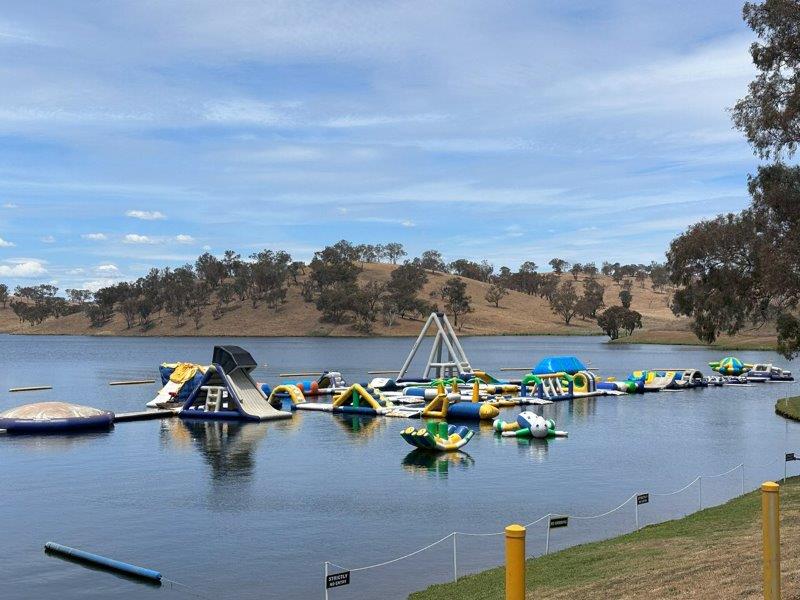
Bathurst must be best known for the Mount Panorama V8 racetrack, and we just had to drive around the track.
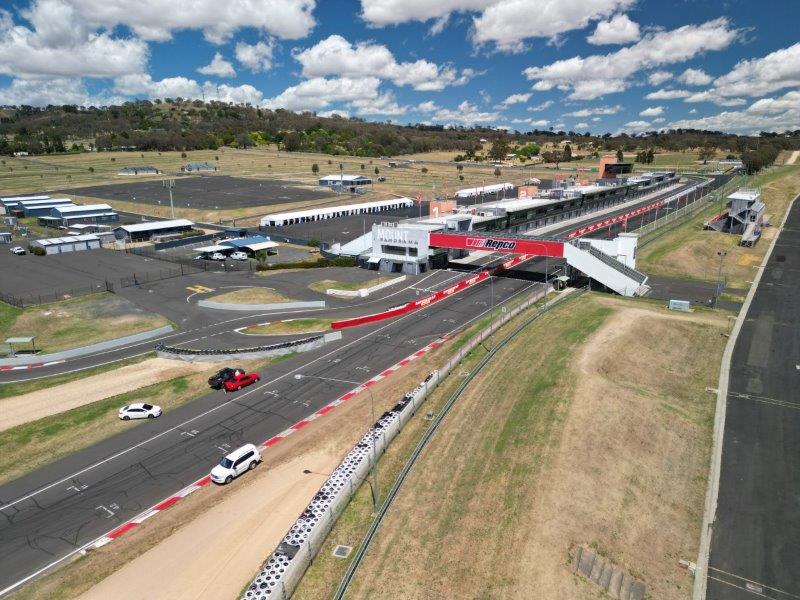
No competition whatsoever as we cross the finish line…
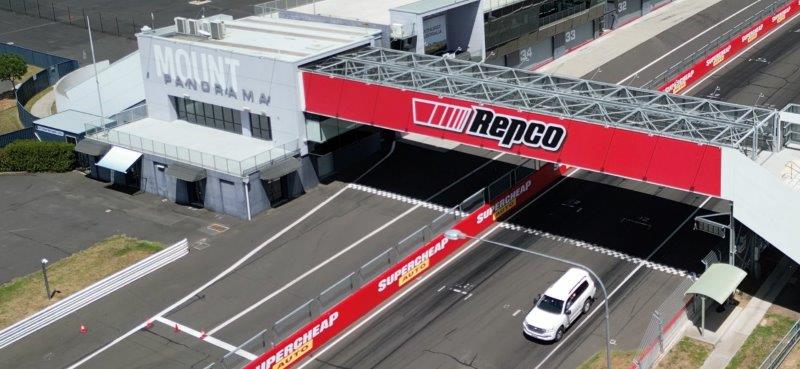
Peter Brock won 9 Bathurst races as well as the 2003 Monaro 24 Hour Endurance Race at this track. The statute below was commissioned in his honor at the The National Motor Racing Museum at the start of the track.
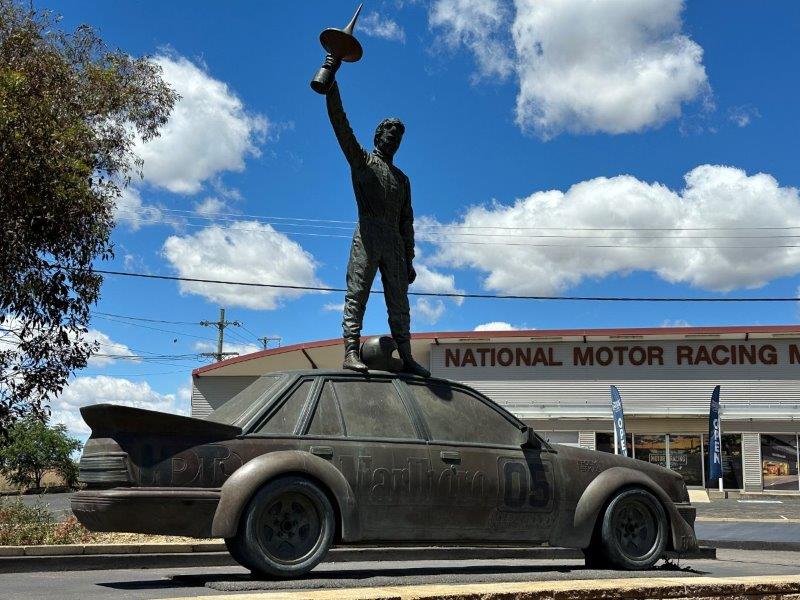
Every winner of the Bathurst 1000 race gets a plague mounted at the Victors Walk on Russel Street in the CBD of Bathurst.
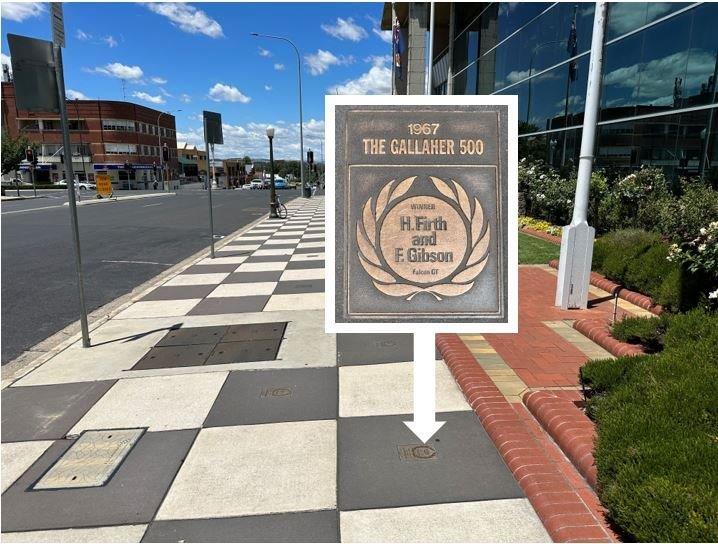
This town has a rich railway heritage with museums located around the railway station. The 5112 Chifley Locomotive became famous as one of its frequent drivers Ben Chifley, became Prime Minister of Australia. Chifley had a successful career on the railways and was an active union member before becoming Prime Minister in 1945. He stayed in office until 1949.
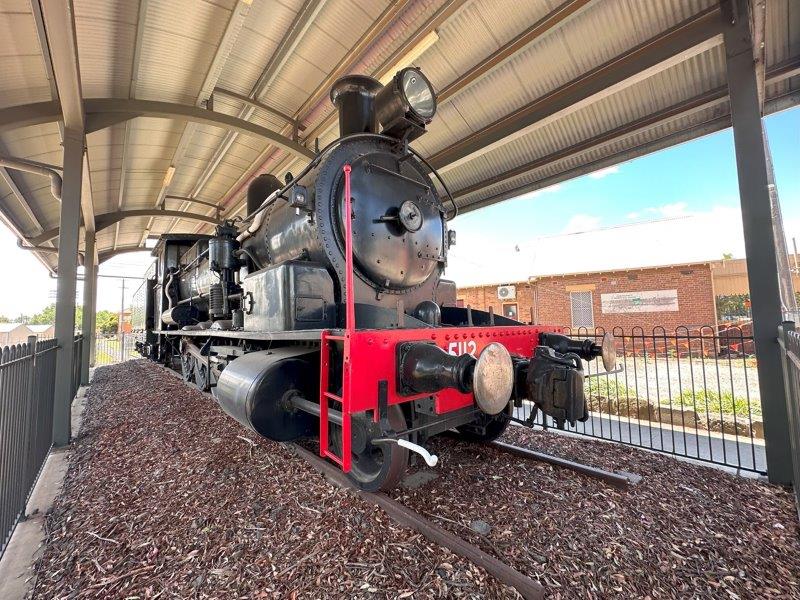
The Abercrombie House was build in 1870 by Bathurst pioneers, the Steward family. The Morgan family bought the property 54 years ago and has completed significant renovations. The property is open to the public and can be booked for weddings, high teas and other events.
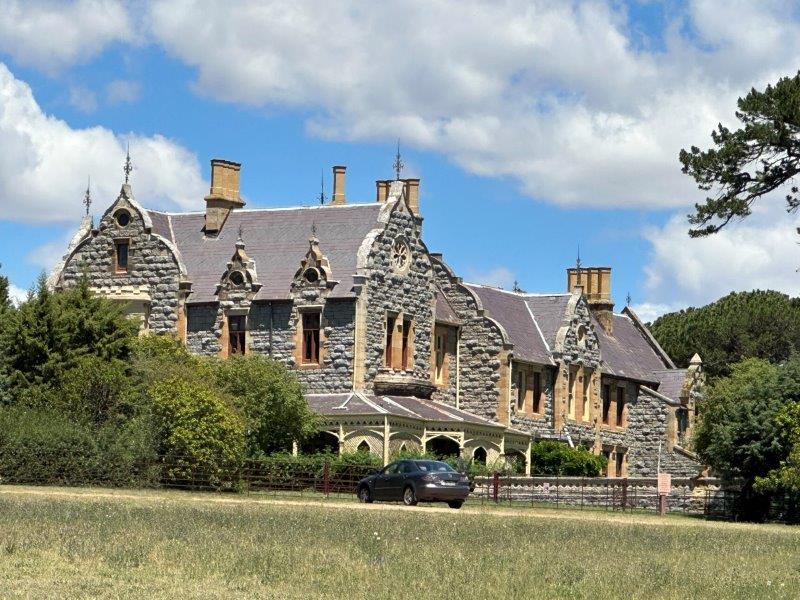
As we left Bathurst, we passed The Big Gold Panner Man.
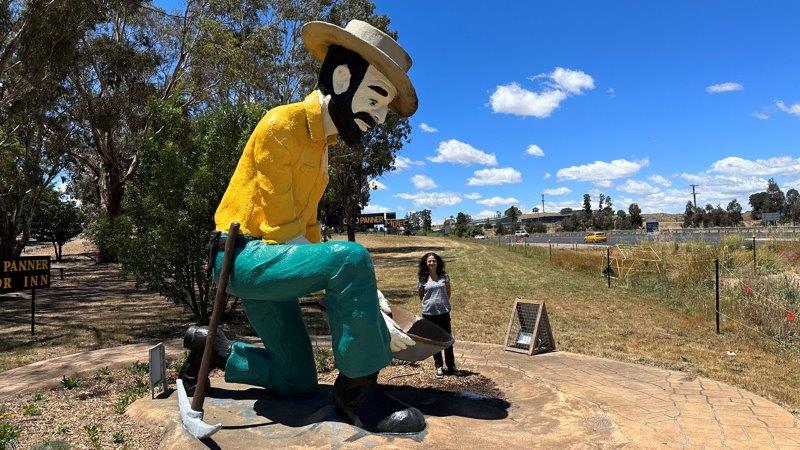
Next stop was Orange. After a stop at the Information Centre, we were really surprised with what this town had on offer.

Right next to the Information Centre was the Orange Regional Art Gallery. Walking into the gallery, the Steel and Varnish Art by Paul Selwood (2009), named “Sacred Play”, caught our eye.

The bronze sculpture below is a work by Tim Storrier. It portrays an artist’s horse and was named “Tully’s Baggage”.

The acrylic and sand painting below is named “After the fires at Kariong #2” and was done by David Rose in 2006.
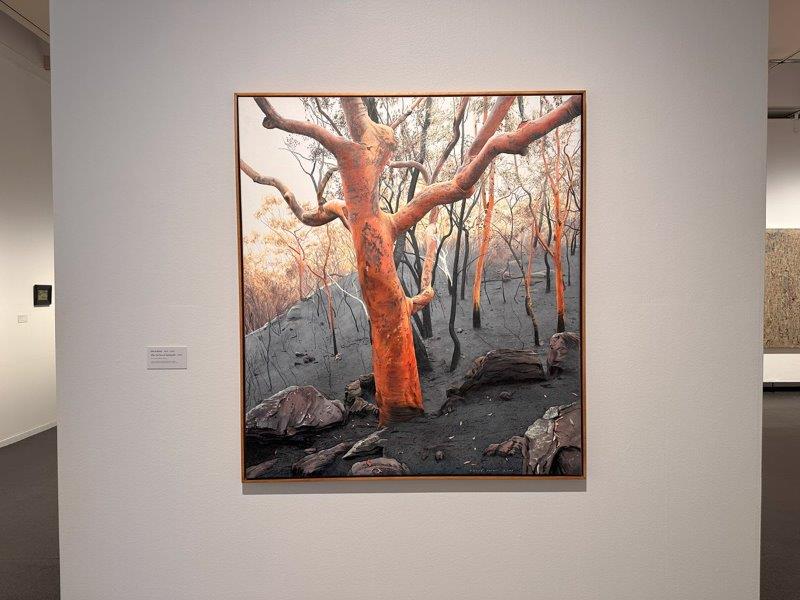
We did a walk around Lake Canobolas.

After the walk around the lake, we drove to the Mount Canobolas State Conservation Area. The highest vantage point in the conservation area is the Summit Lookout. On the way to the lookout, the evidence of the bushfire destruction was prevalent.

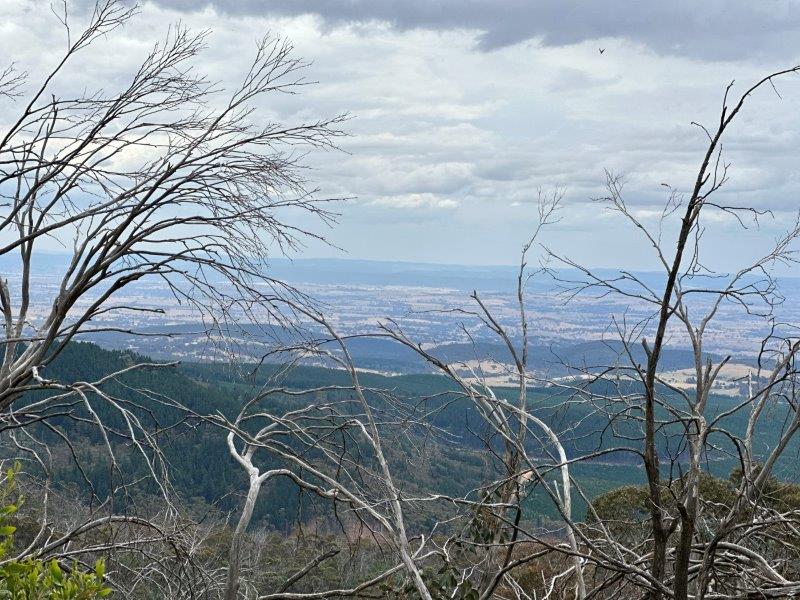
From the Summit Lookout we took a 4X4 track down the mountain through bushland and forestry areas. Our next stop was the Towac Pinnacle Lookout. This short but steep walk was absolutely worthwhile and has 270 degree view over Orange.
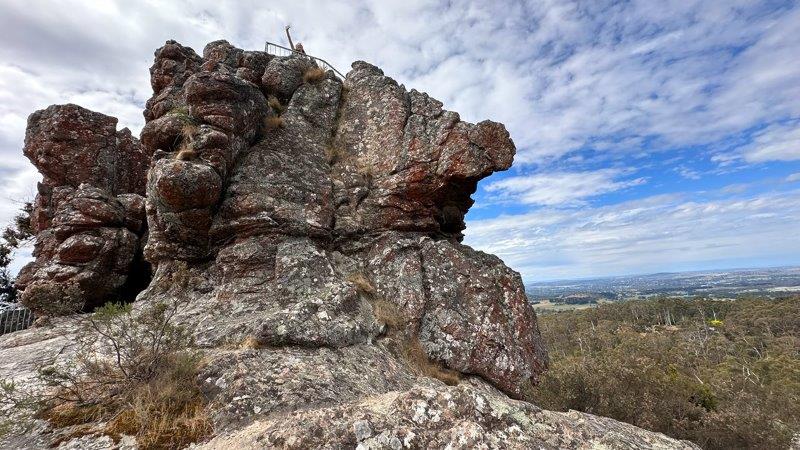
The walk leads to rugged boulders. At the back of the boulders is staircase to the top.

We found the view from the top better than the Summit Lookout.
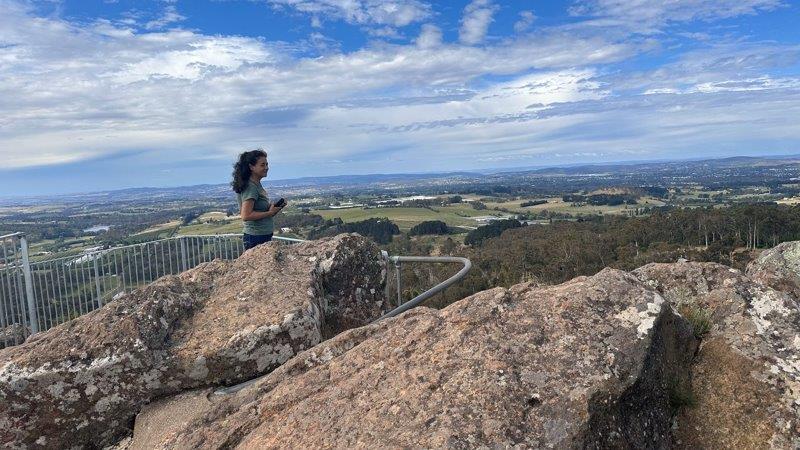
The next day we started with the Falls Waterfall in the Summer Hill Creek in Mullion Range State Conservation Area. These cascading falls were flowing but would be more scenic after some rainfall.
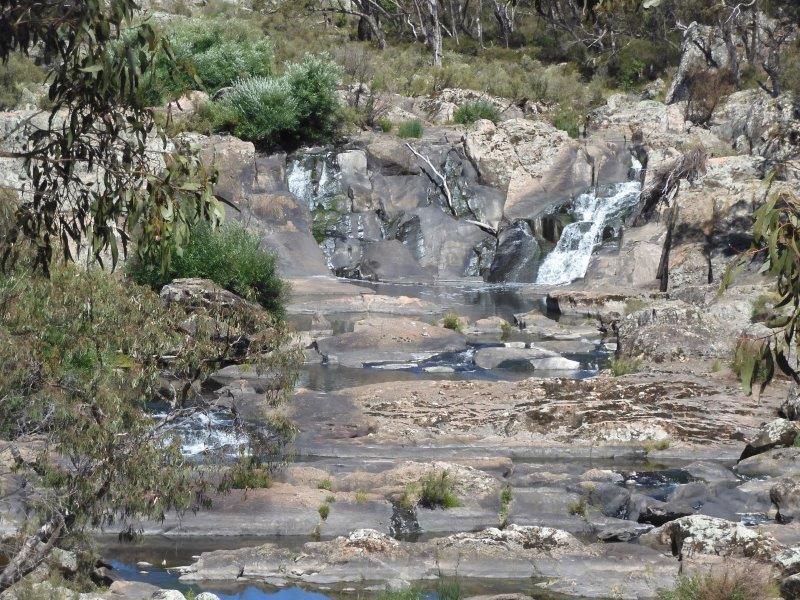
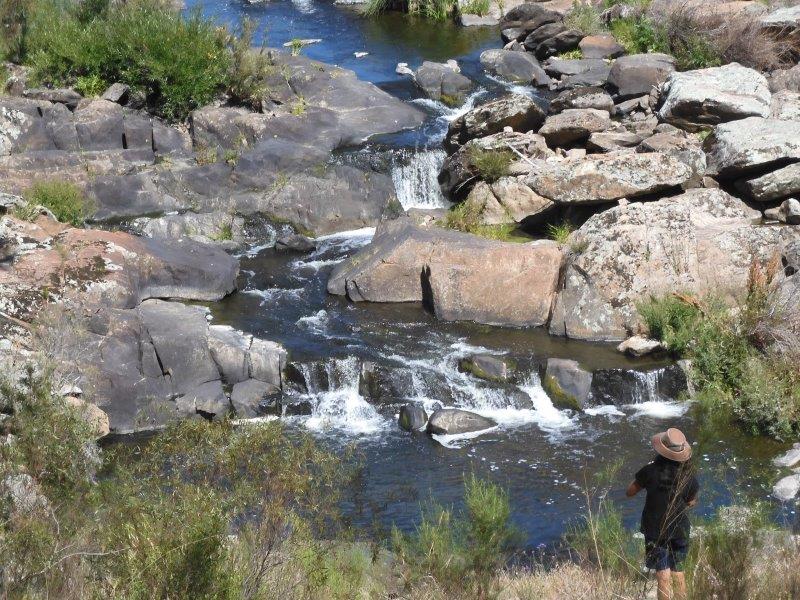
The Borenore Caves are in the Borenore Karst Conservation Area. The cave is best viewed by taking the Arch Loop Track from the picnic area. Inside the cave it was pitch black.
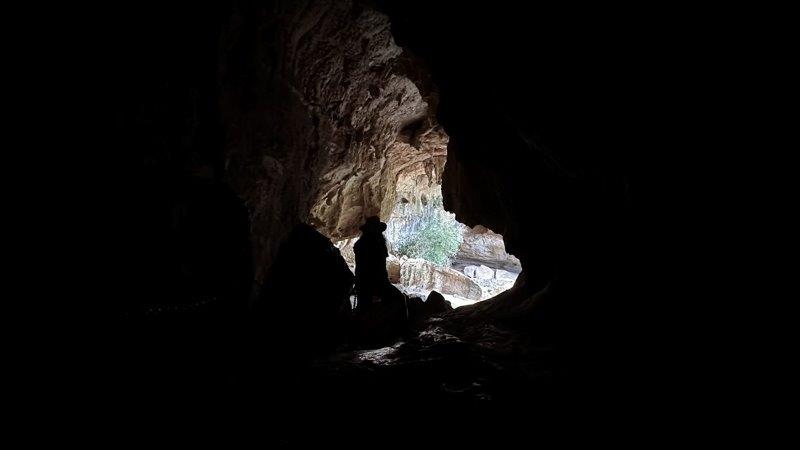
Through the back of the cave is a handrail to assist getting down below the arch.

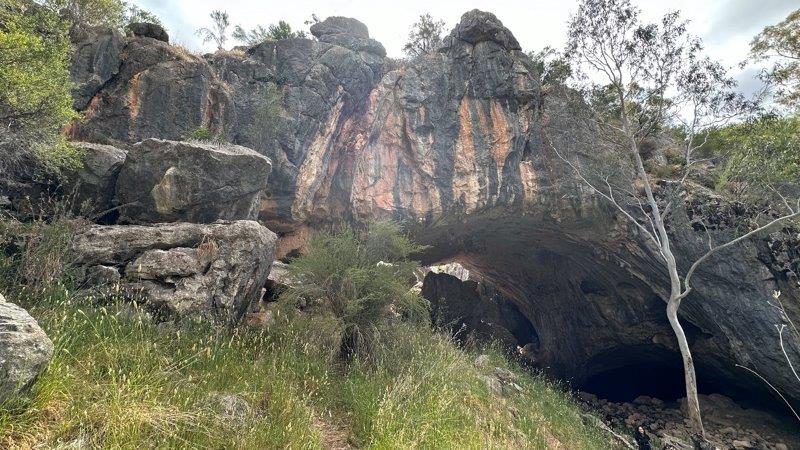
From the arch you follow the circular track around the hill back to the picnic area.
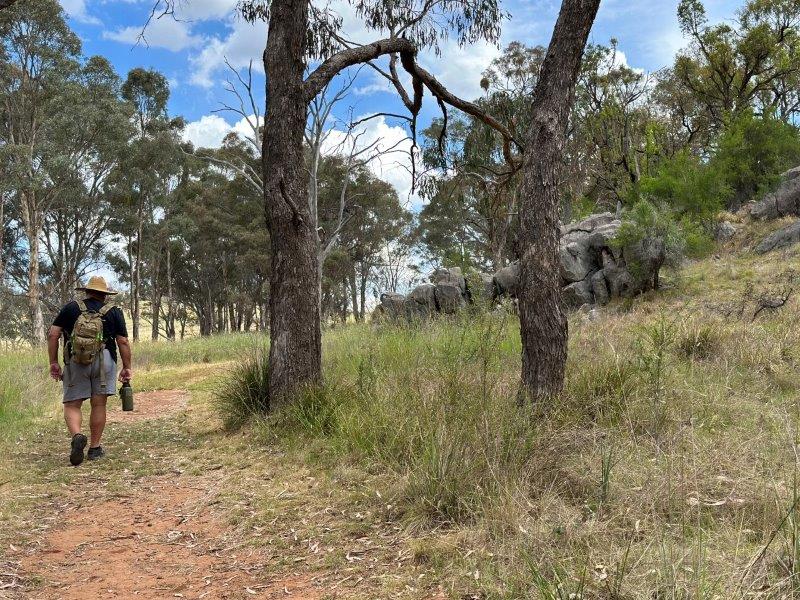
We did a daytrip to Ophir, known for Australia’s first Gold Rush, after the first payable gold was found in 1851. The site is north of Orange. A dusty gravel road takes you through this harsh countryside to an oasis where Lewis Ponds and Summer Hill Creeks join. It is now home to a picnic and camping area.
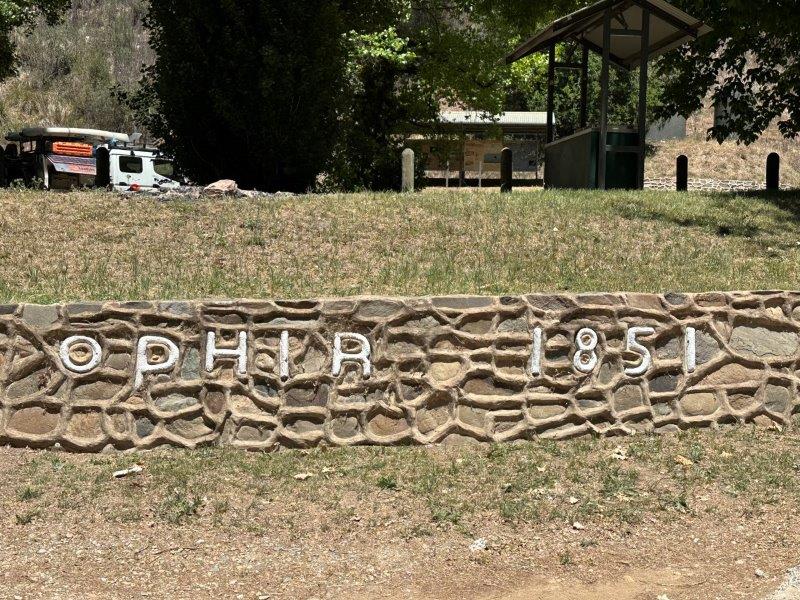
Just a hundred meter from the Picnic Area is The Bluff Tunnel used for bringing minerals to the tramway.
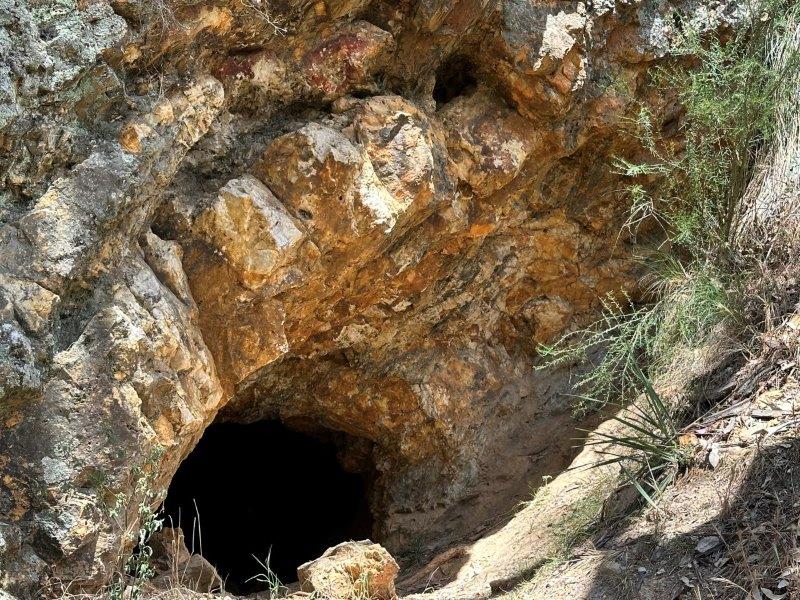
We were moving south and our next stop was Grenfell. We just keep stumbling across big things during our travels. Grenfell had The Big Gold Pick and Pan.

Close to the free camping area at the historical railway station, was this silo art, by Heesco Khosnaran.
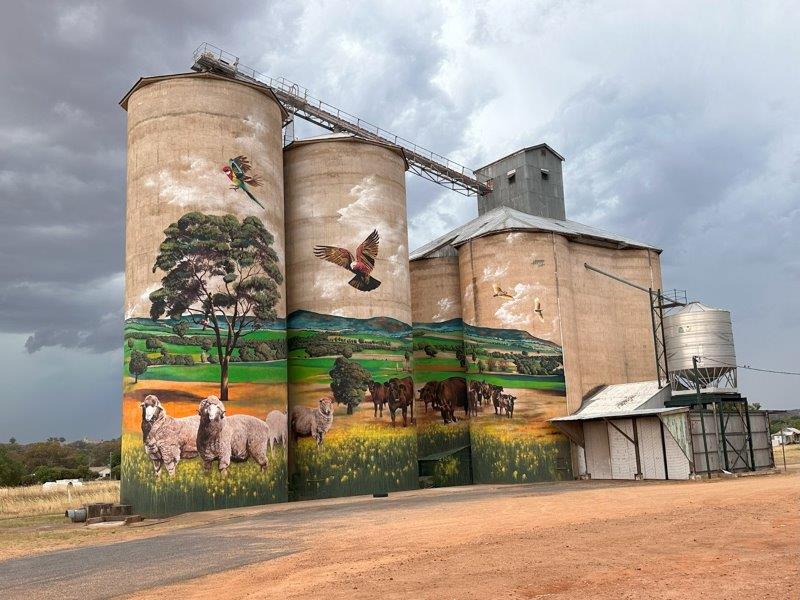
The Grenfell Community Curtain is on display in the galley behind the Information Centre. The Curtain is approximately 5.3m by 7.6m. Sylvia Brind and a group of dedicated volunteers took more than 7 years to produce this curtain. The curtain showcases some of the local attractions in the Grenfell area.
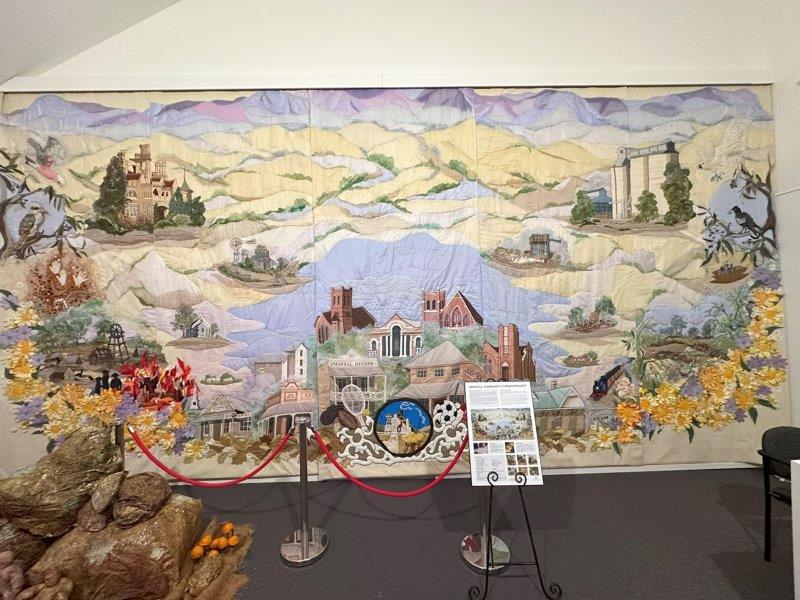
Grenfell is also home to the historic Chrysler museum. This museum is open to the public on specific days. As we were strolling through the main street I saw the owner was in the museum. After a chat and a nominal entry fee he agree that I could go through the museum and even offer a one-on-one tour through the classic vehicles. Jeff the owner, pictured below, is passionate about the Chryslers and very knowledgeable on the national and international history of the brand.
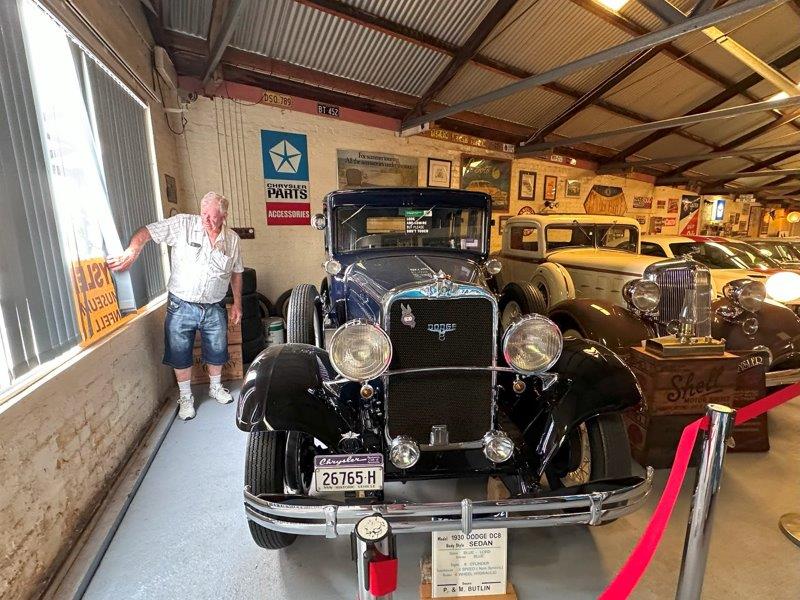
Every car had an interesting history. Jeff particularly took fancy to this 1972 Chrysler VH Valiant Charger RT E49.

Henry Lawson, one of Australia’s most loved poets, was born in Grenfell. Grenfell and Gulgong jointly host an annual Henry Lawson festival to celebrate his life and contribution to literature. This festival has been running for the last 67 years. You cannot walk through the town without realising the impact he had on this community. His statute is in the main road.

Our next stop was Cowra. This was a great opportunity to catch up with close friends. It was also the first time in 6 months that we entered a private home and sat on a comfortable couch. Wow, these people are spoiled… 🙂
The Sunday before we left we went for a quick drive through Cowra. We started at the Bellevue Hill Lookout overlooking the town.
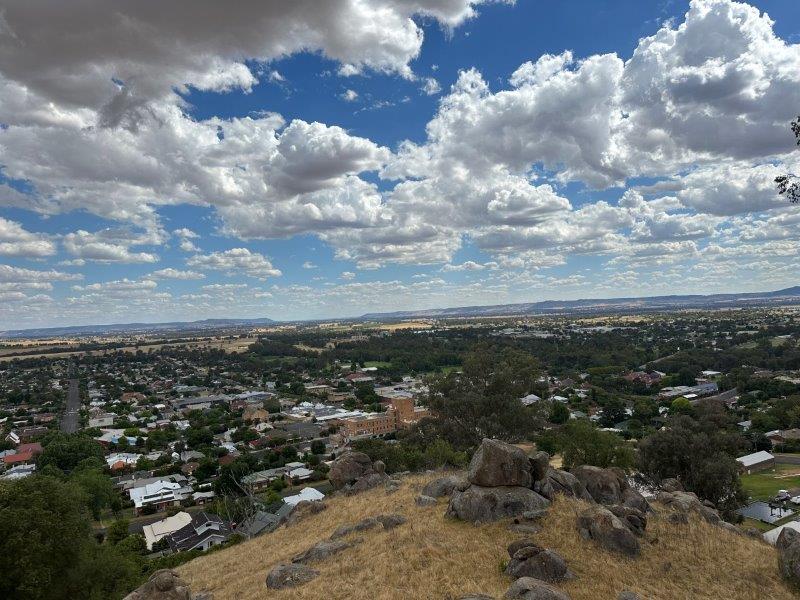
The water towers were painted by Brightsiders, The Zookepper and DRAPL. The one tower has an indigenous theme while the other reflects on the Prisoner of War (POW) camp and its impact on the town.

During World War II, Cowra had a POW camp where more that a thousand Japanese and Italian prisoners of war were held. The Japanese prisoners staged a mass breakout which led to 235 deaths. The ruins of the camp and the sad history is still being preserved. Walking tracks in the POW Camp link the ruins of different points of interest in the camp. There are also information boards and an audio presentation at the watchtower, to provide an insight into the history.
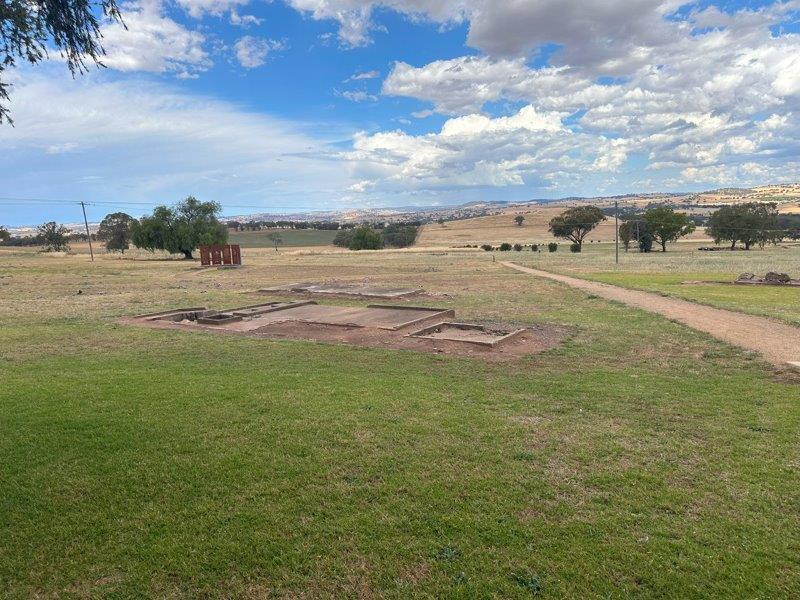
When World Peace Bells are awarded, they are generally featured in capital cities. In Australia’s case, Cowra was nominated in 1992 to be home to the Australian peace bell to recognise its commitment to the World Peace Bell`s objectives.
The bell is made of melted brass coins from the member countries of the United Nations. The bell is at the Civic Squire and can be rung by visitors.
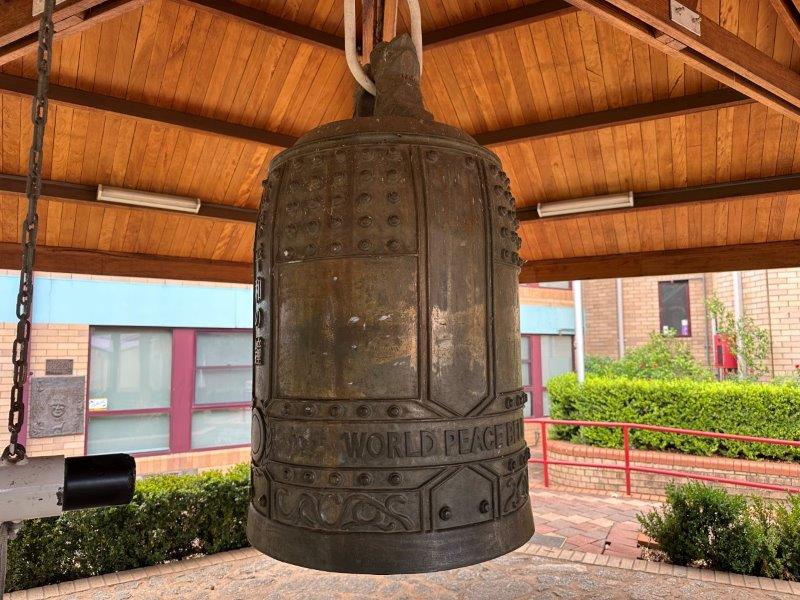
As we left Cowra, we also left NSW as we crossed the border over to the Australian Capital Territory (ACT). In the ACT we spent most of our time in Canberra, which we will cover in the next blog.
